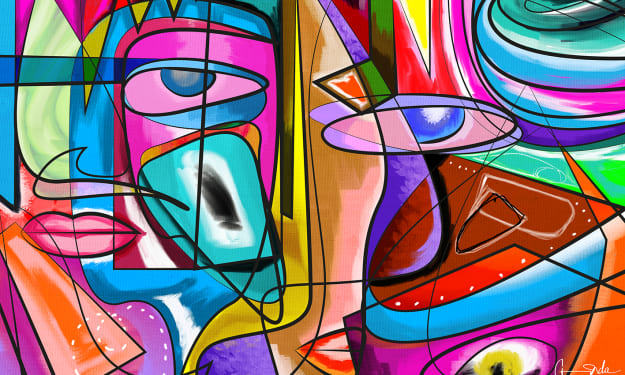The NFTs
The Future and Value of NFTs

The future of Non-Fungible Tokens (NFTs) is a topic that has generated significant interest and speculation in recent years. NFTs, which are digital assets that represent ownership or proof of authenticity of a unique item or piece of content, have gained widespread attention for their potential to revolutionize various industries, including art, collectibles, gaming, and beyond. While the future of NFTs is inherently uncertain, there are several key trends and possibilities worth considering.
Art and Creative Industries:
NFTs have already made a profound impact on the art world, enabling artists to tokenize their work and sell it directly to collectors without the need for intermediaries. This trend is likely to continue, with NFTs offering artists greater control over their creations, transparency in ownership, and the potential for ongoing royalties through smart contracts. The future of NFTs in art could see more established artists embracing the technology, new forms of interactive and multimedia art emerging, and increased engagement from art enthusiasts and collectors around the world.
Collectibles and Memorabilia:
NFTs have reimagined the concept of digital collectibles, allowing individuals to own and trade unique items in virtual spaces. This includes digital trading cards, virtual real estate, virtual fashion items, and more. In the future, we can expect NFTs to continue transforming the collectibles market, with an increasing number of brands, celebrities, and sports teams leveraging the technology to create and distribute exclusive digital merchandise. Virtual experiences, augmented reality (AR), and virtual reality (VR) integration could further enhance the value and appeal of these digital collectibles.
Gaming and Virtual Worlds:
NFTs have immense potential in the gaming industry, where they can be used to represent in-game assets, virtual land, and even player-owned economies. This enables players to truly own their digital items and trade them freely. In the future, NFTs could play an integral role in shaping the gaming landscape, fostering decentralized marketplaces for virtual goods, enabling cross-game item interoperability, and facilitating unique gaming experiences that blur the lines between reality and the virtual realm. Additionally, blockchain technology underlying NFTs can enhance security, combat fraud, and empower players with true ownership of their virtual assets.
Intellectual Property and Licensing:
NFTs offer creators a means to protect and monetize their intellectual property more effectively. Artists, musicians, writers, and other content creators can use NFTs to establish provenance, track the usage and distribution of their work, and receive fair compensation for their creations. In the future, NFTs could revolutionize licensing models, allowing for more transparent and streamlined processes, direct engagement with fans, and new revenue streams for content creators in the digital age.
Real-World Asset Tokenization:
While NFTs have predominantly been associated with digital assets, the concept of tokenizing real-world assets is gaining traction. The future of NFTs could see the tokenization of physical assets such as real estate, luxury goods, and intellectual property rights. This would enable fractional ownership, easier transfer of ownership, and increased liquidity for traditionally illiquid assets. It could also democratize access to investments and unlock new opportunities for asset diversification.
Sustainability and Environmental Impact:
As the popularity of NFTs grows, concerns about their environmental impact have been raised due to the energy-intensive nature of blockchain technology. In the future, it is crucial for the NFT ecosystem to address these concerns by exploring more energy-efficient consensus mechanisms, embracing renewable energy sources, and adopting sustainable practices. This could involve the development of greener blockchain networks or the utilization of layer-2 solutions to reduce the carbon footprint associated with NFT transactions.
Interoperability and Standards:
As the NFT space continues to evolve, the establishment of industry standards and interoperability protocols becomes increasingly important. Interoperability would allow for seamless exchange and utilization of NFTs across different platforms, enhancing liquidity, expanding the ecosystem, and ensuring the longevity of NFT investments. Efforts are already underway to develop standards such as ERC-721 and ERC-1155 on Ethereum, but further advancements and collaboration among different blockchain networks are needed for widespread interoperability.
It's important to note that while NFTs hold immense potential, there are also challenges and uncertainties to address. These include issues of copyright infringement, legal and regulatory frameworks, market saturation, and the need for ongoing innovation to maintain the interest and value of NFTs in the long term.
In conclusion, the future of NFTs is a dynamic and rapidly evolving landscape. They have the potential to reshape industries, empower creators, and redefine notions of ownership and value. As technology advances, adoption grows, and the ecosystem matures, the true extent of the impact and potential of NFTs will continue to unfold.
About the Creator
chaminda senanayake
I am an artistic wordsmith who possesses a deep passion for art and the internet. With their creativity and love for writing, they skillfully translate the beauty of various art forms into captivating content and immersive stories.






Comments
There are no comments for this story
Be the first to respond and start the conversation.